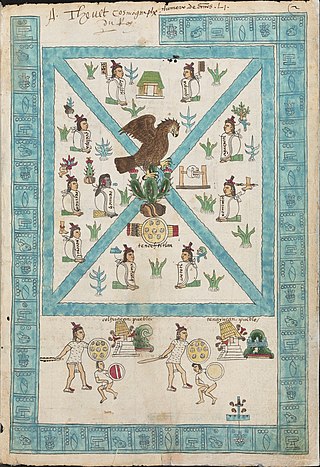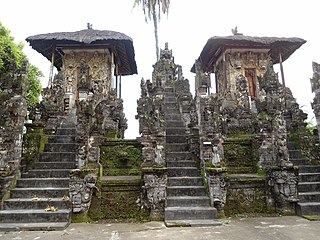
Lim Chu Kang is a planning area located in the northwestern part of the North Region of Singapore, bordering the Western Water Catchment to the west and south, Sungei Kadut to the east and the Straits of Johor to the north.

The Library of Virginia in Richmond, Virginia, is the library agency of the Commonwealth of Virginia. It serves as the archival agency and the reference library for Virginia's seat of government. The Library moved into a new building in 1997 and is located at 800 East Broad Street, two blocks from the Virginia State Capitol building. It was formerly known as the Virginia State Library and as the Virginia State Library and Archives.

Samarahan Division is one of the twelve administrative divisions in Sarawak, Malaysia. Formerly part of the First Division, which included Kuching, it became a separate Division on 24 July 1986, with a total area of 4,967.4 square kilometres.

Singaraja is a port town in northern Bali, Indonesia, which serves as the seat of Buleleng Regency. The name is Indonesian for "Lion King". It is just east of Lovina and is also the centre of Buleleng District, which covers an area of 46.94 km² and had a population of 153,930 in 2022, the second largest on the island.
Justin Harvey Smith was an American historian and specialist on the Mexican–American War.

Aztec codices are Mesoamerican manuscripts made by the pre-Columbian Aztec, and their Nahuatl-speaking descendants during the colonial period in Mexico.

Codex Ríos is an Italian translation and augmentation of a Spanish colonial-era manuscript, Codex Telleriano-Remensis, that is partially attributed to Pedro de los Ríos, a Dominican friar working in Oaxaca and Puebla between 1547 and 1562. The codex itself was likely written and drawn in Italy after 1566.

Gedong Bagus Oka was a Hindu reformer and philosopher in Indonesia. She was one of the foremost authorities on Agama Hindu Dharma and started the Parisada Hindu Dharma Indonesia movement in the 1980s. She was a recipient of the 1994 Jamnalal Bajaj Award.
The Codex Mexicanus is an early colonial Mexican pictorial manuscript.
The Bernard Free Library was the first free public library in Burma, and a direct predecessor to the National Library of Myanmar.

Palm-leaf manuscripts are manuscripts made out of dried palm leaves. Palm leaves were used as writing materials in the Indian subcontinent and in Southeast Asia dating back to the 5th century BCE. Their use began in South Asia and spread to other regions, as texts on dried and smoke-treated palm leaves of the Palmyra or talipot palm. Their use continued until the 19th century when printing presses replaced hand-written manuscripts.

The Codex Laud, or Laudianus, is a sixteenth-century Mesoamerican codex named for William Laud, an English archbishop who was the former owner. It is from the Borgia Group, and is a pictorial manuscript consisting of 24 leaves from Central Mexico, dating from before the Spanish takeover. It is evidently incomplete.
The National Library of Myanmar, located in Yankin Township, Yangon, is the national library of Myanmar. Established in 1952, the National Library, along with Universities' Central Library, is one of only two research libraries in Yangon. The library houses more than 220,000 books, divided into 10 sections.

Gedong Songo is a group of Hindu temples located near Bandungan, Semarang Regency, in north Central Java, Indonesia. It is variously dated between the 8th and 9th-century. Built around a 1,270 metres (4,170 ft) hill near Mount Ungaran, it consist of five Gedong – two on the east side of the hill, two towards the north and one to the west. These total nine temples, all dedicated to Shiva and Parvati. The Gedong Songo complex is one of 110 sites in central Java with Hindu temple structures or remains, and one of 21 in Semarang area, states Veronique Degroot.
The Purbakala Archaeological Museum or Gedong Arca Museum is a museum located in Bedulu on Bali, Indonesia.

The William L. Clements Library is a rare book and manuscript repository located on the University of Michigan's central campus in Ann Arbor, Michigan. Specializing in Americana and particularly North American history prior to the twentieth century, the holdings of the Clements Library are grouped into four categories: Books, Manuscripts, Graphics and Maps. The library's collection of primary source materials is expansive and particularly rich in the areas of social history, the American Revolution, and the colonization of North America. The Book collection includes 80,000 rare books, pamphlets, broadsides, and periodicals. Within the other divisions, the library holds 600 atlases, approximately 30,000 maps, 99,400 prints and photographs, 134 culinary periodicals, 20,000 pieces of ephemera, 2,600 manuscript collections, 150 pieces of artwork, 100 pieces of realia, and 15,000 pieces of sheet music.

The National Library of Cambodia is the national library of Cambodia, based in Phnom Penh.

Pura Penataran Sasih is a Hindu temple in Pejeng village, Bali. According to a modern chronogram displayed at the entrance, it was founded in 1266 AD and served as the state temple of the Pejeng Kingdom.

Gedong Tinggi Palmerah is an 18th-century Dutch Indies country house located in Jakarta, Indonesia. The building is among the protected colonial heritage of Indonesia. Like many other colonial country houses of Jakarta, despite its protection by the government, the lack of interest in the study of the building caused it to slowly fall into disrepair. It was converted into a police station.

Pura Dalem Segara Madhu also known as Pura Dalem Jagaraga is a northern Balinese Hindu temple or pura located in the village of Jagaraga, Buleleng in northern Bali. It is about 11 km east of Singaraja. The village of Jagaraga is known historically as the place where the Dutch colonial government witnesses puputan or Balinese mass-suicide following their military attack on the kingdom of Bali in 1849. Pura Dalem Segara Madhu is known for its intensive wall decoration typical of northern Balinese architecture and for its unique western-influenced reliefs featuring early 20th-century airplanes and automobiles.

















